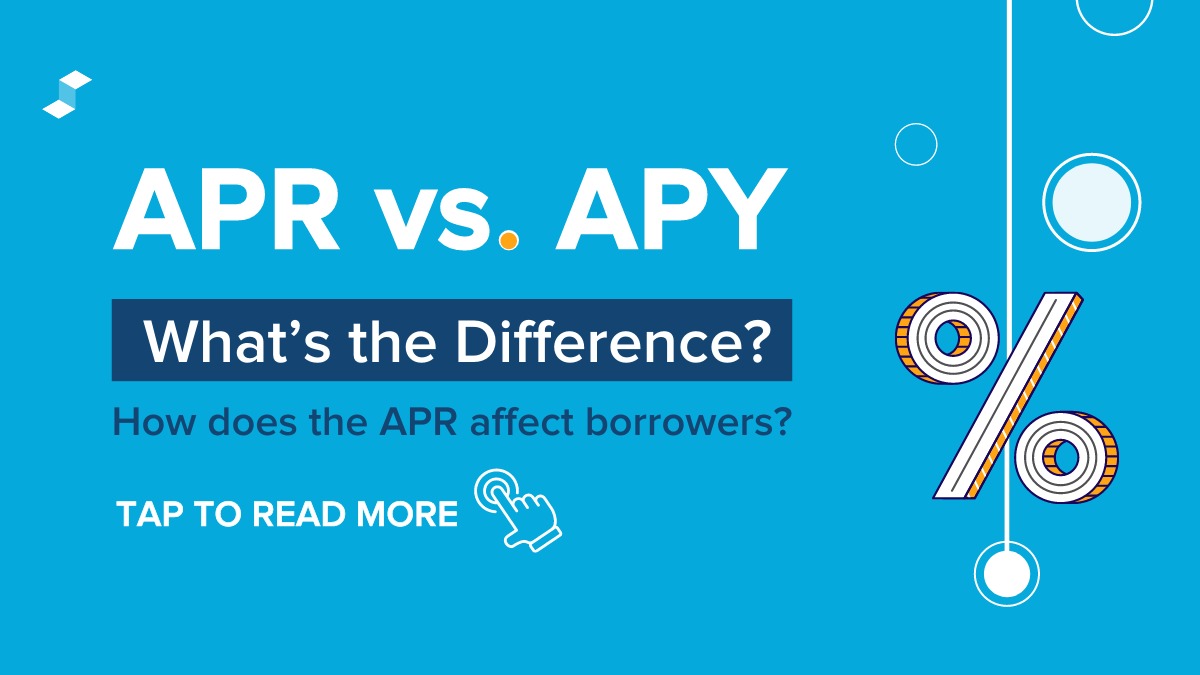Home>Finance>What Are The Differences Between A Traditional Savings Account And An Online Savings Account?


Finance
What Are The Differences Between A Traditional Savings Account And An Online Savings Account?
Modified: December 30, 2023
Discover the key distinctions between traditional and online savings accounts. Gain insights on the best choice for your financial needs.
(Many of the links in this article redirect to a specific reviewed product. Your purchase of these products through affiliate links helps to generate commission for LiveWell, at no extra cost. Learn more)
Table of Contents
Introduction
When it comes to saving money, there are various options available, but two popular choices are traditional savings accounts and online savings accounts. Both serve the same purpose of helping individuals grow their savings, but they have some distinct differences. Understanding these differences can help you make an informed decision about which type of account is best suited for your needs.
A traditional savings account is typically offered by brick-and-mortar banks or credit unions and has been the go-to option for many years. On the other hand, online savings accounts have gained popularity in recent years due to their convenience and higher interest rates. So, let’s explore the key differences between these two types of accounts to help you determine which one is the right fit for you.
Convenience:
One of the major advantages of online savings accounts is the convenience they offer. With online accounts, you can manage your savings from the comfort of your home, office, or anywhere with an internet connection. You can easily access your account, check your balance, transfer funds, and set up automatic savings plans with just a few clicks. Traditional savings accounts, on the other hand, require visiting a physical branch during working hours, which can be inconvenient for individuals with busy schedules.
Interest Rates:
When it comes to earning interest on your savings, online savings accounts often offer higher rates compared to traditional accounts. This is because online banks have lower overhead costs, allowing them to pass on the savings to their customers in the form of higher interest rates. This means that your money can grow at a faster rate in an online savings account, helping you reach your financial goals more quickly.
Fees:
Another important factor to consider is the fees associated with the account. Traditional savings accounts may have monthly maintenance fees, minimum balance requirements, and fees for certain services. These fees can eat into your savings and reduce the overall return on your investment. Online savings accounts, on the other hand, tend to have lower fees or even no fees at all. This can result in more money staying in your account and working for you.
Convenience
One of the biggest advantages of online savings accounts is the convenience they offer. With an online savings account, you have the flexibility to manage your money anytime, anywhere. There is no need to go to a physical bank branch, wait in line, or adhere to specific banking hours. You can access your account 24/7 from the comfort of your own home, office, or even on the go through mobile banking apps.
Online savings accounts also provide ease of use through intuitive and user-friendly interfaces. You can check your account balance, view transaction history, set up automatic transfers, and even deposit checks using your smartphone camera. All these features make managing your savings quick and hassle-free.
Additionally, online savings accounts offer the convenience of electronic transfers. You can easily move money between your checking account and your online savings account with just a few clicks. This makes it simple to allocate funds for your savings goals, whether it’s saving for a vacation, a down payment on a house, or an emergency fund.
On the other hand, traditional savings accounts may require you to visit a physical branch during specific operating hours. This can be inconvenient, especially if you have a busy schedule or your nearest branch is not easily accessible. You may have to take time off work or rearrange your daily routine to accommodate visiting the bank.
Additionally, traditional savings accounts often involve filling out paper forms for various transactions or waiting in line for assistance from a bank teller. These processes can be time-consuming and may not align with today’s fast-paced lifestyle.
Overall, online savings accounts provide unparalleled convenience and flexibility. They give you the freedom to manage your savings on your own terms, saving you time and effort in the process.
Interest Rates
One of the key differences between a traditional savings account and an online savings account is the interest rate offered. Interest is the money earned on your deposit, and it plays a vital role in growing your savings over time.
When it comes to interest rates, online savings accounts tend to offer higher rates compared to traditional savings accounts. This is because online banks have lower overhead costs, such as maintaining physical branches and employing a large staff. As a result, they can pass on these cost savings to their customers in the form of higher interest rates.
Higher interest rates mean that your savings can grow at a faster rate. Over time, this can make a significant difference in the amount of money you accumulate in your account. With a higher interest rate, your savings have the potential to compound more quickly, allowing you to reach your financial goals sooner.
On the other hand, traditional savings accounts usually offer lower interest rates. While they may provide other benefits like easy access to physical branches and in-person customer service, the trade-off is lower returns on your savings.
It’s important to keep in mind that interest rates can vary among different online banks and traditional banks. It’s always a good idea to compare rates and shop around to find the account that offers the most competitive interest rate for your savings. This can involve researching different banks, comparing their advertised rates, and reviewing customer reviews and satisfaction levels.
It’s also worth noting that interest rates can change over time due to market conditions and economic factors. Therefore, it’s important to stay informed about any changes in interest rates and adjust your saving strategy accordingly.
In summary, online savings accounts generally offer higher interest rates compared to traditional savings accounts. These higher rates can significantly boost your savings over time and help you achieve your financial goals faster. However, it’s important to do your research and compare rates to find the account that best suits your needs and offers the most competitive interest rate.
Fees
When it comes to fees, there are notable differences between traditional savings accounts and online savings accounts. Understanding the fees associated with each type of account is crucial to avoid unnecessary expenses and maximize your savings.
Traditional savings accounts sometimes come with various fees, including monthly maintenance fees, minimum balance fees, and fees for certain transactions or services. These fees can eat into your savings, reducing the overall return on your investment.
Monthly maintenance fees are a common fee charged by traditional banks. These fees are typically charged if you don’t maintain a minimum account balance or if you don’t meet certain requirements, such as making a specific number of transactions each month.
Similarly, minimum balance fees are charged if your account balance falls below a specific threshold. If you dip below the required minimum balance, you may incur a fee each month until your balance meets the minimum requirement again.
In addition, traditional banks may charge fees for certain transactions or services, such as wire transfers, outgoing transfers, or ordering checks. These fees can vary depending on the bank and the specific service requested.
On the other hand, online savings accounts tend to have lower fees or even no fees at all. Online banks typically operate with lower overhead costs since they don’t have physical branches to maintain or a large staff to employ. As a result, they can pass on these savings to their customers by offering fee-free or low-fee accounts.
While online savings accounts may still have some fees, such as fees for excessive withdrawals beyond the monthly limit imposed by federal regulations, these fees are generally minimal compared to the fees charged by traditional banks.
It’s important to review the fee structure of any savings account you are considering and compare them carefully. Pay attention to the types of fees charged, the conditions under which they are assessed, and the potential impact on your savings. Be sure to factor in these fees when evaluating the overall value and benefit of each account.
In summary, traditional savings accounts often come with various fees, such as monthly maintenance fees and minimum balance fees, whereas online savings accounts tend to have lower fees or no fees at all. By understanding the fee structure of each account, you can make an informed decision that helps you minimize expenses and maximize your savings.
Access to Funds
Access to funds is an essential consideration when choosing between a traditional savings account and an online savings account. Both types of accounts offer different options for accessing your money when you need it.
With a traditional savings account, you typically have multiple options for accessing your funds. This includes visiting a physical branch to make withdrawals or write checks, using an ATM card linked to your savings account, or transferring funds to your linked checking account.
Physical branches allow you to interact with bank tellers directly, making it convenient for those who prefer face-to-face interactions. This can be especially helpful when dealing with complex transactions or when you require assistance with your account.
In contrast, online savings accounts provide a different approach to accessing funds. Most online accounts allow you to transfer money electronically to your linked checking account or another external account. This can be done through online banking platforms or mobile apps. Some online banks may also offer ATM cards or checks for withdrawal purposes.
While online transfers can take a bit longer to process compared to cash withdrawals or check writing, they offer convenience and flexibility. You can initiate transfers anytime and from anywhere, giving you the ability to manage your finances remotely. This can be particularly advantageous for individuals who frequently travel or have a busy schedule.
It’s important to note that online savings accounts often have limits on the number of monthly withdrawals you can make due to federal regulations. Exceeding these limits may result in fees or restrictions on further withdrawals during the statement cycle.
When considering access to funds, it’s crucial to evaluate your personal banking needs and preferences. If you value in-person interactions and the ability to withdraw cash easily, a traditional savings account with a physical branch may be the better choice. However, if you prioritize convenience and remote access to your funds, an online savings account may offer the flexibility you need.
In summary, traditional savings accounts provide various options for accessing funds, including physical branches, ATMs, and check writing. Online savings accounts, on the other hand, offer flexibility through electronic transfers and remote management. Consider your banking preferences and lifestyle to determine which account type aligns with your needs for accessing your funds.
Customer Service
Customer service is an important aspect to consider when choosing between a traditional savings account and an online savings account. It’s crucial to assess the level of support and assistance you can expect from the bank to address any questions, concerns, or issues that may arise.
Traditional savings accounts often come with the advantage of in-person customer service at physical branches. This means you can visit a bank teller and speak directly with a representative to get assistance with your account. This direct interaction can be particularly helpful for those who prefer face-to-face communication or have complex banking needs that require personal attention.
Furthermore, traditional banks typically have customer service phone lines that allow you to speak with a representative for assistance. You can make inquiries, report problems, and receive guidance on various banking matters.
On the other hand, online savings accounts offer customer service through online platforms, email, or phone lines. While you may not have the option for in-person assistance, online banks strive to provide responsive and efficient support to their customers. Many online banks have robust online help centers and FAQs that address common questions and provide self-service options for account management.
When considering customer service, it’s important to assess the availability, responsiveness, and efficiency of the support channels provided by the bank. Look for banks that offer extended hours of support, quick response times to inquiries, and knowledgeable representatives who can assist you promptly.
Customer reviews and ratings can also provide valuable insights into the quality of customer service provided by different banks. Researching the reputation and track record of the bank in terms of customer satisfaction can help you gauge their commitment to providing excellent support.
Ultimately, the choice between a traditional savings account and an online savings account in terms of customer service will depend on your personal preferences and comfort level with different support channels. Consider your communication preferences, the importance of in-person assistance, and your willingness to adapt to online platforms when evaluating the customer service aspect.
In summary, traditional savings accounts offer in-person customer service at physical branches, while online savings accounts provide customer support through online platforms, email, or phone lines. Assess the availability, responsiveness, and reputation of customer service channels to determine which account type aligns with your preferences and expectations for assistance.
Security and Protection
When it comes to your hard-earned money, ensuring its security and protection is of utmost importance. Both traditional savings accounts and online savings accounts offer measures to safeguard your funds, but there are some differences to consider.
Traditional savings accounts provided by brick-and-mortar banks have a long-standing reputation for security. These banks employ physical security measures, such as security guards, surveillance cameras, and vaults, to protect their customers’ deposits. Additionally, traditional banks are subject to federal regulations and oversight to ensure the safety and soundness of the financial institution.
Online savings accounts also prioritize security but employ different measures to protect your funds. These measures include encryption technology to secure your data, multifactor authentication for account access, and protocols to detect and prevent fraudulent activities. Online banks also partner with established financial institutions and use secure networks to ensure the safety of your transactions.
It’s important to note that both traditional and online banks are FDIC (Federal Deposit Insurance Corporation) insured. This means that if the bank fails, your deposits are insured up to the maximum limit allowed by law (currently $250,000 per depositor, per insured bank). This insurance coverage provides an additional layer of protection for your savings.
However, it’s worth mentioning that cybersecurity risks and the potential for identity theft exist in the online realm. To mitigate these risks, it’s essential to follow best practices for online security, such as using secure passwords, regularly monitoring your account activity, and being cautious of phishing attempts or suspicious emails.
Additionally, stay informed about the security measures that online banks have in place. Research their encryption protocols, privacy policies, and customer reviews regarding the security of their platforms. Look for banks that prioritize security and have a strong reputation for safeguarding customer information and funds.
Ultimately, both traditional savings accounts and online savings accounts offer security and protection for your money. Traditional banks provide physical security measures and the familiar setting of physical branches, while online banks employ advanced encryption technology and offer FDIC insurance coverage. Assess your comfort level with technology, your awareness of online security best practices, and your preferences for physical security measures when considering the security aspect.
In summary, traditional savings accounts and online savings accounts offer security and protection for your money through different measures. Both types of accounts provide FDIC insurance coverage, but traditional banks emphasize physical security measures, while online banks focus on advanced cybersecurity protocols. Consider your comfort level with technology and evaluate the security measures implemented by the bank to make an informed decision about the security aspect.
Physical Branches
One significant difference between traditional savings accounts and online savings accounts is the presence of physical branches. Traditional banks have a network of physical branches where customers can visit in-person for their banking needs. On the other hand, online savings accounts do not have physical branches and operate solely through digital platforms.
Physical branches offer several advantages for customers. First and foremost, they provide a sense of familiarity and security. Being able to walk into a branch, interact with bank tellers, and see the physical infrastructure can provide peace of mind for many individuals. In-person interactions also allow for a personal touch, enabling customers to ask questions, address concerns, and receive immediate assistance.
Traditional banks with physical branches provide additional services that online banks may not offer. These services include access to safe deposit boxes, on-site notary services, and assistance with complex transactions or financial planning. Physical branches also allow for cash deposits and withdrawals, which may be advantageous for individuals who prefer to handle cash transactions or have limited access to online banking facilities.
However, the presence of physical branches does come with some drawbacks. Visiting a branch during working hours may require adjusting one’s schedule or taking time off from work, which can be inconvenient for many people. Additionally, physical branches often have longer wait times, especially during peak hours, which can lead to extended wait times for assistance.
Online savings accounts, on the other hand, eliminate the need for physical branches altogether. They operate exclusively through online platforms and provide a convenient and streamlined banking experience. This means that customers can manage their savings from anywhere, anytime, using a computer, tablet, or smartphone. Online savings accounts are particularly advantageous for individuals with busy schedules or those who prefer the convenience of remote banking.
While the absence of physical branches may initially seem like a limitation, online savings accounts offer various features and conveniences that cater to the digital age. These include 24/7 account access, mobile banking apps, electronic transfers, and advanced online tools for budgeting and goal tracking. These online tools often offer comprehensive financial management options that allow customers to track their spending, set savings goals, and monitor their progress.
In summary, traditional savings accounts have the advantage of physical branches, providing in-person assistance and access to additional services. Online savings accounts, on the other hand, offer the convenience of 24/7 access, mobile banking, and advanced online tools. Consider your preferences for in-person interactions, access to physical banking services, and the convenience of digital banking when evaluating the importance of physical branches in your saving’s account choice.
Online Tools and Features
When comparing traditional savings accounts to online savings accounts, one area where online accounts have a significant advantage is the availability of innovative online tools and features. These tools and features are designed to enhance your financial management experience and help you achieve your savings goals more effectively.
Online savings accounts often come equipped with robust online banking platforms and mobile apps that provide a wide range of features to simplify money management. These tools allow you to monitor your account balances, view transaction history, and set up customized alerts for balance thresholds, transaction notifications, or upcoming due dates. This real-time access to your financial information puts you in control of your savings and allows for quick decision-making.
One of the key online tools available to online savings account holders is budgeting and goal tracking features. These tools enable you to create budgets, categorize your expenses, and track your progress towards specific savings goals. This helps you gain a clear understanding of your spending habits and identify areas where you can make adjustments to save more effectively.
Furthermore, online savings accounts often offer automated savings features that allow you to set up recurring transfers from your checking account to your savings account. These automatic transfers ensure that you consistently contribute to your savings without having to manually initiate the process each time. This effortless saving feature helps you stay on track with your financial goals.
In addition to budgeting and saving tools, online savings accounts may provide educational resources and financial calculators. These resources can help you make informed decisions about your savings strategies, understand the impact of different interest rates or investment options, and educate yourself on various personal finance topics.
Online accounts often have integrated bill payment features as well, making it easy to pay bills from your savings account directly. This streamlines your finances by consolidating your savings and payment obligations in one place.
It’s important to note that the specific online tools and features available may vary between different banks and online savings account providers. Therefore, it’s essential to research and compare the offerings of different institutions to determine which one aligns with your financial management needs.
In summary, online savings accounts offer a wide array of online tools and features that simplify financial management and promote effective savings habits. These features include real-time account access, budgeting tools, goal tracking, automated savings options, educational resources, and bill payment capabilities. Evaluate the online tools and features provided by different banks to find the account that offers the most comprehensive and user-friendly tools to support your savings journey.
Pros and Cons of Traditional Savings Accounts
Pros:
- Physical Branches: Traditional savings accounts offer the convenience of physical branches, providing in-person assistance, access to additional services, and the familiarity of face-to-face interactions.
- Cash Handling: Traditional banks allow for cash deposits and withdrawals, which can be advantageous for individuals who prefer to handle cash transactions or have limited access to online banking facilities.
- Established Reputation: Traditional banks often have longstanding reputations and are subject to federal regulations and oversight, providing a sense of security and stability.
- Broad Service Offering: Traditional banks offer a wide range of services, including safe deposit boxes, notary services, and personalized financial advice, catering to a variety of banking needs.
Cons:
- Limited Hours and Accessibility: Physical branches have specific operating hours, which may not align with an individual’s schedule. Additionally, visiting a branch in person may require adjusting one’s schedule or taking time off from work.
- Wait Times: Physical branches often have longer wait times, especially during peak hours, which can lead to extended wait times for customer service or other transactions.
- Potential Fees: Traditional savings accounts may come with various fees, such as monthly maintenance fees, minimum balance fees, and fees for certain transactions or services. These fees can reduce the overall return on your savings.
In summary, traditional savings accounts offer the benefits of physical branches, in-person assistance, cash handling capabilities, and established reputations. However, they may have limitations in terms of operating hours, wait times, and potential fees. Consider these pros and cons when evaluating whether a traditional savings account aligns with your banking needs and preferences.
Pros and Cons of Online Savings Accounts
Pros:
- Convenience: Online savings accounts provide the convenience of managing your finances from anywhere and at any time. You can access your account 24/7 through online platforms or mobile apps, eliminating the need to visit a physical branch.
- Higher Interest Rates: Online savings accounts often offer higher interest rates compared to traditional savings accounts. This can help your savings grow at a faster rate, maximizing the return on your investment.
- Lower Fees: Online savings accounts typically have lower fees or no fees at all, compared to traditional savings accounts. This allows you to keep more of your savings and avoid unnecessary expenses.
- Advanced Online Tools: Online savings accounts come with a range of online tools and features that facilitate financial management. These tools include budgeting features, goal tracking, automated savings options, and access to educational resources.
- Immediate Access to Funds: Online savings accounts provide the ability to transfer funds electronically, allowing for quick access in case of emergencies or immediate financial needs.
Cons:
- Lack of Physical Presence: Online savings accounts do not have physical branches, which may be a drawback for individuals who prefer in-person interactions or need access to additional services provided by traditional banks.
- Technology Reliance: Online savings accounts require a reliable internet connection and a degree of technological proficiency. Individuals who are not comfortable with technology may find it challenging to navigate and manage their accounts online.
- Potential Security Risks: As with any online activity, there is a risk of cyber threats and identity theft. However, online banks employ advanced security measures to safeguard customer information and funds.
- Limited Cash Handling: Online savings accounts may have limited options for cash deposits and withdrawals. This can be a disadvantage for individuals who frequently deal with cash transactions or have limited access to online banking facilities.
Overall, online savings accounts offer the advantages of convenience, higher interest rates, lower fees, advanced online tools, and immediate access to funds. However, they may not provide the physical presence of branches, require technological reliance, and have limitations when it comes to cash handling. Consider these pros and cons when determining if an online savings account aligns with your financial goals and preferences.
Conclusion
Choosing between a traditional savings account and an online savings account ultimately depends on your personal preferences, financial goals, and lifestyle. Understanding the key differences between these two types of accounts can help you make an informed decision that aligns with your needs and priorities.
If you value in-person interactions, access to additional services, and are comfortable with traditional banking practices, a traditional savings account with a physical branch may be the better option. Traditional accounts provide the familiarity of physical branches, cash handling capabilities, and a wide range of services. However, it’s important to consider factors such as limited operating hours, potential fees, and the inconvenience of physical visits during your evaluation.
On the other hand, if convenience, higher interest rates, lower fees, and advanced online tools are important to you, an online savings account may be the ideal choice. Online accounts offer the flexibility to manage your finances from anywhere, at any time, through user-friendly online platforms and mobile apps. With higher interest rates and lower fees, they can help your savings grow more quickly. However, consider the limitations of physical accessibility, reliance on technology, and potential security risks that come with managing your account online.
Remember to research and compare different banks and account offerings to find the one that best suits your financial priorities and preferences. Look for a bank that provides ample customer support, transparent fee structures, and strong security measures to safeguard your information and funds.
In conclusion, both traditional savings accounts and online savings accounts have their own unique advantages and considerations. Assess your banking needs, evaluate the pros and cons outlined in this article, and choose the account type that aligns with your financial goals, convenience requirements, and comfort level with technology. Taking the time to consider these factors will ensure that you make a well-informed decision and set yourself up for financial success.














